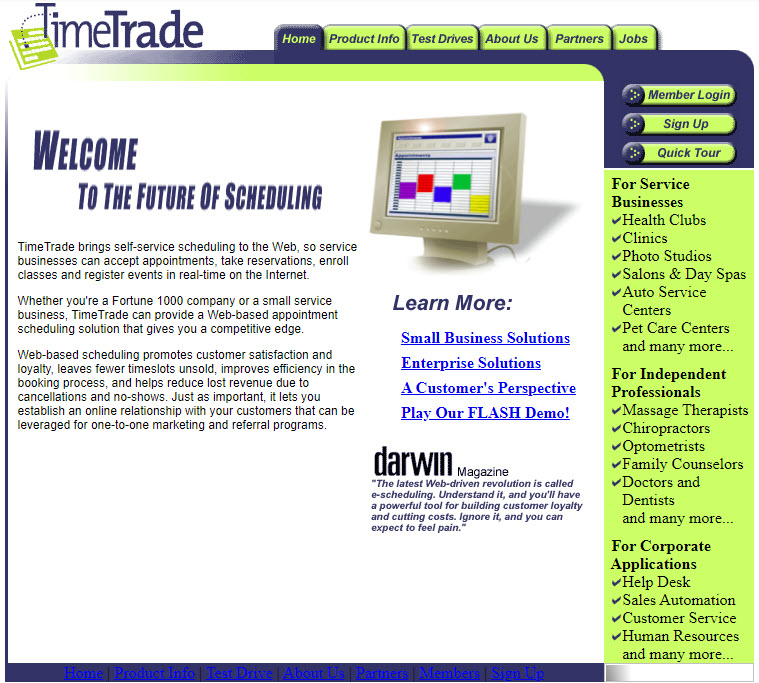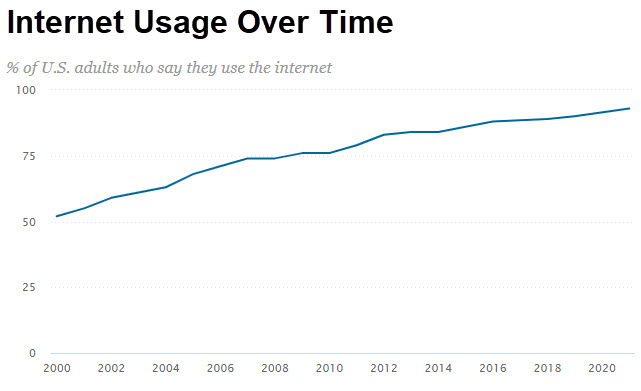Consumers have scheduled over one billion appointments with some of the world’s leading organizations utilizing Engageware’s Appointment Scheduling.
To mark this historic milestone, we spoke with John Loring, Chief Technologist and co-founder, to understand how the industry-leading appointment scheduling solution originated, to how it is helping organizations grow revenue, optimize efficiency, and deliver exceptional customer experiences through stronger customer engagement, today.
Q: TimeTrade was one of the pioneers of online appointment scheduling. What was the catalyst in 1999 to launch this type of service?
A: It all started with an idea to support a hair salon by allowing people to schedule their next hair appointment online. We initially envisioned it serving small to medium-sized businesses, from health and wellness appointments with salons, health clubs, spas, fitness centers, to group tours with tourism operators, to car dealerships.
We started working with a local health club that was interested in the scheduling application, and they were very helpful in providing us with an understanding of the types of functionalities needed. Working so closely with these types of businesses in the early stages allowed us to start developing the software and conceiving feature functionality (like the ability to group certain appointment types together) that were necessary to support their business.
As we continued to do more research and discovery with SMBs, we started to hear that they could really benefit from an appointment scheduling solution. We experimented with selling it as software and providing it as an online service. What happened next was a bit of a surprise…We found that when a company purchased it as software, they weren’t necessarily opening the scheduling directly to their clients, the end user. In other words, they were using it to schedule appointments internally.

Larger companies became interested in using the technology for their own internal scheduling, for example – a call center representative would book the appointment on behalf of a customer. One of the earliest customers we supported was Sears portrait studios. It was a fairly significant operation, in which our appointment scheduling software supported bookings across multiple locations, time zones, and provided accurate availability of studio rooms, photographers, equipment, etc.
Q: In a way, it seems like the service was ahead of its time. I wonder how much of that can be correlated to general internet usage and the stages of consumer technology adoption?
A: Absolutely. While online appointment scheduling may seem like an obvious customer experience offering today, you have to remember that back in the late 90’s, there wasn’t anything like it. People were starting to use the internet for more and more things, but not to book their own appointments. Appointments were made in person or by phone. Secondly, the SaaS model wasn’t yet mainstream, as a matter of fact, it was still a fairly nascent concept.

Here’s another example of how our technology started to bridge this gap. We developed an application for PetCo for the scheduling of the various services offered at their grooming salons. At that point in time (early 2000s) customers would call in and the PetCo personnel would enter the appointment into the system and manage the corporate-wide grooming schedule across all their locations, but customers weren’t using it yet themselves.
We had another company that leased temporary office space, with multiple locations all over the world. They wanted the scheduling system to incorporate information such as room size, equipment (projectors, phone conferencing, etc.), and of course – many locations. It presented us with an opportunity to further develop our offering to adapt to enterprise-scale operations and their functional requirements. These enterprise type deals were very helpful in developing the feature set of the software – one, that to this day, is unparalleled in its sophistication.
Quest Diagnostics, a longtime customer, was another opportunity that helped advance the evolution of our technology. These enterprise deals for the first several years, allowed us to really flesh out the product in terms of its functionality, and that’s why Engageware’s Appointment Scheduling still has the most flexibility and capability to handle the most complex requirements — more so than any of our competitors.
Q: How have you seen appointment scheduling evolve over the years since its inception back in 1999?
A: Well, it’s been a matter of acceptance in more widespread usage of the technology, but the concept is pretty much the same. It’s evolved over a longer period, but in much the way that we thought it was going to evolve.
But there is one key difference that we wouldn’t have predicted at the time, and that is factoring in the use of physical and virtual space.
When we first developed appointment scheduling, support for multiple locations was built into the system, in-person appointments with resources that had to be present in a physical location at a finite point in time. A location had a certain number of rooms, a certain number of video conferencing equipment, a certain size staff — whatever resources the business used; real things in a real physical location.
But what’s happened over the last 10 years or so is things have become a lot more virtual, so you can have resources that can take appointments for any location, but they are no longer confined to a specific location.
Appointments today occur over the phone or internet, like Zoom and WebEx. And so, that really has required some rethinking of the basic construction of the system and we have made the necessary changes to it to continuously evolve with the changing nature of personal interactions and how business is conducted.
The system supports both physical and virtual resources; they can be physical resources in a location or virtual resources that are capable of servicing appointments at any location. This is a fundamental difference in the way things were 20 years ago. Similarly, the global reach of appointments has made it possible to schedule resources across time zones. A customer can be in a different time zone than the financial advisor they are meeting with. We are continuously adjusting in terms of how the system operates to support a more global set of resources, many of which now happen to be virtual.
Q: What impact does appointment scheduling have on businesses today?
A: People are very comfortable now with doing things online, whether it’s making a purchase, or tracking a package, or refilling a prescription. People are using their phones less and less to make calls. They’re using their phones for texting, internet access, entertainment. Online appointment scheduling dovetails with all the other things that you can now do online; it’s just a natural extension. If you’re looking for a service and you can book it online, it enables a seamless flow from intent to action.
The companies that don’t offer online appointment scheduling are going to lose some percentage of their business because they don’t offer that. What started as the ability to book a haircut online, has over the years filtered down to more and more activities – retail appointments, financial advising, medical labs – there are many things you can now book online. It may not be available for everything yet, but it seems to be going in that direction.
What sets Engageware’s Appointment Scheduling solution apart from others?
20+ years of experience, close development alongside specific customer needs and use cases, ability to calculate multiple scheduling complexities in real time, and our deep industry expertise in scheduling for financial institutions, specialty retail, healthcare and technology. Learn more about enterprise appointment scheduling.
